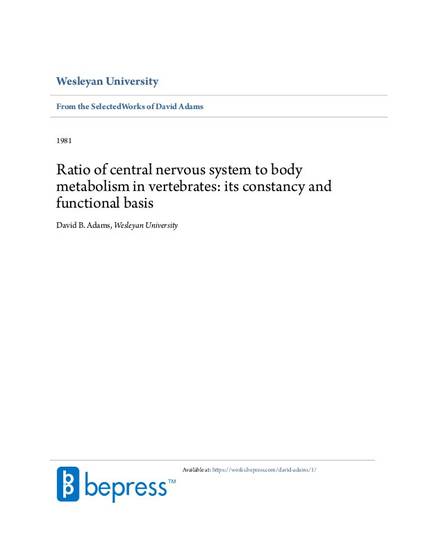
Article
Ratio of central nervous system to body metabolism in vertebrates: its constancy and functional basis
American Journal of Physiology (Regulatory Integrative Comparative Physiology)
(1981)
Abstract
We present and document an hypothesis that healthy adults of most vertebrate species use 2-8% of their basal metabolism for the central nervous system (CNS). This relationship is constant across all classes of vertebrates, as we found by examining data from 42 species, including 3 fish, 3 amphibia, 2 reptiles, 6 birds, and 28 mammals. To explain its constancy, we hypothesize that an optimal functional relationship between the energy requirements of an animal’s executor system (muscle metabolism) and its control system (CM metabolism) was established early in vertebrate evolution. Three types of exceptional cases are discussed in terms of the hypothesis: very large animals, domesticated animals, and primates.
Disciplines
Publication Date
1981
DOI
10.1152/ajpregu.1981.241.3.R203
Publisher Statement
- Institutional repositories (non-theses). Authors may deposit their accepted, peer-reviewed manuscripts into an institutional repository providing:
- the APS retains copyright to the article1
- a 12 month embargo period from the date of final publication of the article is observed by the institutional repository and the author
- a link to the published article on the APS website is prominently displayed with the article in the institutional repository
- the article is not used for commercial purposes
- Self-archived articles posted to repositories are without warranty of any kind
1Unless it is published under the APS AuthorChoice open access option, which allows for immediate public access under a Creative Commons license (CC BY)
Citation Information
David B. Adams. "Ratio of central nervous system to body metabolism in vertebrates: its constancy and functional basis" American Journal of Physiology (Regulatory Integrative Comparative Physiology) Vol. 241 Iss. 10 (1981) p. R203 - R212
Available at: http://works.bepress.com/david-adams/1/
